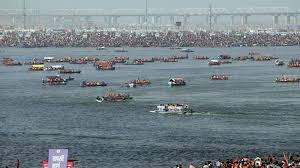

Business worth Rs 3 lakh crore expected due to maha Kumbh!
About 60 crore devotees are expected to arrive in 45 days during maha Kumbh 2025, organized from 13 january to 26 february in Prayagraj, which is estimated to generate business worth more than Rs 3 lakh crore (D 3,00,000 crore or about $360 billion). Giving this information, praveen Khandelwal, National General Secretary of Confederation of All india Traders (CAIT) and chandni Chowk mp from Delhi, said, this largest human gathering of the world has established that faith also includes economy and the roots of Sanatani economy are very strong in india, which is also a big part of the main economy of the country.
Praveen Khandelwal said that according to an estimate before the start of maha Kumbh, there was a possibility of 40 crore people coming to maha Kumbh and business worth about 2 lakh crore rupees was expected, but due to the unprecedented enthusiasm of people about maha Kumbh in the whole country, it is expected that by 26 february, about 60 crore people will come to maha Kumbh, due to which a huge business worth more than three lakh crore rupees is expected, which has given a big boost to the economy of Uttar Pradesh and has also created new business opportunities. Khandelwal said that according to the Uttar Pradesh government, till now more than 53 crore devotees have taken the holy bath, and a huge number of people continue to visit maha Kumbh every day. Outlining the economic impact of maha Kumbh, praveen Khandelwal said that as per estimates, economic activities have been boosted on a large scale in many areas of business, which mainly include hospitality and accommodation, food and beverages, transport and logistics, religious clothing, worship materials and handicrafts, textiles, apparel and other consumer goods, health services and wellness sector, religious donations and other religious events, media, advertising and entertainment, infrastructure development and civil services, telecom, mobile, AI technology, use of CCTV cameras and other technical equipment etc., which has also provided employment to a large number of people.




 click and follow Indiaherald WhatsApp channel
click and follow Indiaherald WhatsApp channel